Wildflowers, Grasses and Other Nonwoody Plants
Media
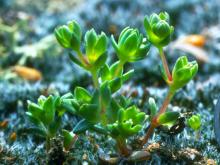
Species Types
Scientific Name
Geocarpon minimum
Description
Geocarpon is a tiny, inconspicuous plant found almost exclusively on sandstone glade outcrops. Extremely rare, it is a species of conservation concern. It is related to carnations!
Media
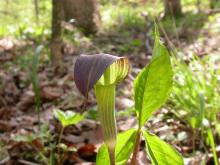
Species Types
Scientific Name
Arisaema triphyllum
Description
Preacher Jack in his “pulpit” is sheltered by the canopylike spathe, which is green with white and brown lengthwise markings. An unforgettable spring wildflower, Jack-in-the-pulpit is common throughout the state.
Media
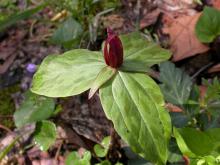
Species Types
Scientific Name
Trillium sessile
Description
The flower of wake robin, or trillium, has 3 petals and 3 sepals, and 3 leaves that subtend the solitary flower. The petal color varies in this common woodland spring wildflower, but it is most commonly brownish or maroon.
Media
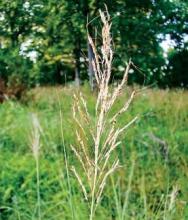
Species Types
Scientific Name
Bothriochloa bladhii
Description
Causasian bluestem and the closely related yellow bluestem are both aggressive, weedy degraders of pasturelands that escape cultivation and endanger native habitats. Learn more about these Old World grasses, and please don’t plant them!
Media

Species Types
Scientific Name
Sorghum halepense
Description
Johnson grass is a native of the Mediterranean that is invasive in our country. It’s a weed that infests cropland and degrades native ecosystems, and heavy infestations are found in all the major river bottoms of Missouri.
Media
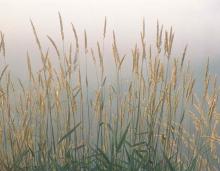
Species Types
Scientific Name
Phalaris arundinacea
Description
Reed canary grass is native to Europe, Asia, and North America, and it varies quite a bit. Our native Missouri version, for instance, is quite different from the Eurasian type that has been widely introduced — and which has proven to be highly invasive.
Media
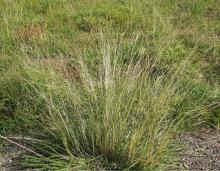
Species Types
Scientific Name
Bothriochloa ischaemum
Description
Yellow bluestem is a nonnative, aggressive, weedy degrader of pasturelands that escapes cultivation and endangers native habitats. It blooms in Missouri in late June to July, far earlier than our native bluestems.
Media
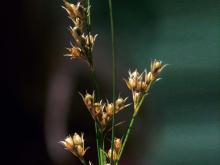
Species Types
Scientific Name
Juncus spp. and Luzula spp.
Description
Missouri has 24 species in the rush family. Distinguishing between these grasslike plants can be tricky, but it’s easy to learn some basics about the group.
Media

Species Types
Scientific Name
Carex, Schoenoplectus, Scirpus, and other genera
Description
Missouri has more than 200 species in the sedge family. Distinguishing between these grasslike plants can be difficult, but it’s easy to learn some basics about the group.
Media

Species Types
Scientific Name
Scrophularia marilandica
Description
Eastern figwort occurs statewide in rich woods, woodland borders, and bottomlands. It’s usually 2-5 feet high, has square stems and lance-shaped, toothed leaves, and bears spreading clusters of small, green scoop-shaped flowers with brown petal lobes.
See Also
About Wildflowers, Grasses and Other Nonwoody Plants in Missouri
A very simple way of thinking about the green world is to divide the vascular plants into two groups: woody and nonwoody (or herbaceous). But this is an artificial division; many plant families include some species that are woody and some that are not. The diversity of nonwoody vascular plants is staggering! Think of all the ferns, grasses, sedges, lilies, peas, sunflowers, nightshades, milkweeds, mustards, mints, and mallows — weeds and wildflowers — and many more!





















